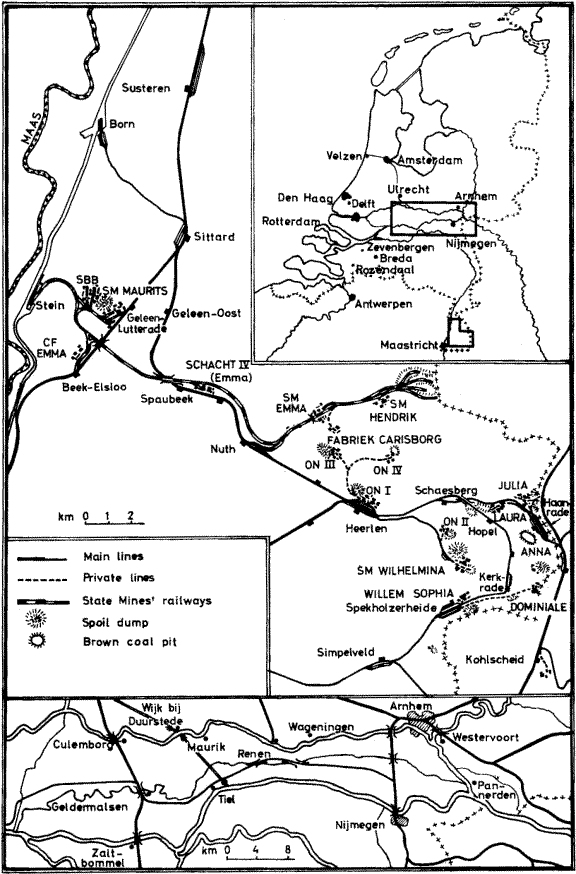
| THE INDUSTRIAL RAILWAY RECORD |
© JUNE 1969 |
INDUSTRIAL LOCOMOTIVES OVERSEAS
| (9) HOLLAND |
R. J. BRETTSCHNEIDER and B. N. VAN DEN BERG |
Nowadays Holland can scarcely be described as a steam enthusiast's paradise, but with a little time and patience one can still catch a glimpse of what it used to be like in all places in days gone by. Several steam locomotives have survived in industrial service despite a strong tendency towards dieselisation and the use of alternative means of transport. Notable victims are the Velzen Steelworks and the State coal mines, each having diesels only now.
In a way the same holds true for the brickworks, the greater part of which are situated on the banks of the Lek, Rijn, Waal and IJsel rivers, although the arrival of a diesel did not always mean the replacement of a steam loco. In a considerable number of cases all traffic had previously been worked by horses, and even today horses are still used to haul bricks to and from the drying sheds at some brickworks (including the AriŽns 1 Works). Wijk bij Duurstede in particular was a good centre for seeing steam. To the west was the Bosscherwaard Brickworks, far away in the outer marches and only reached by a rough cart-track. They had a small 700mm gauge 0−4−0 well tank (Orenstein & Koppel 10221 of 1922), bought from a contractor and carrying a large spark arrester on the chimney. We saw her for the last time in 1964 when she was in the shed with the motion partly taken down and awaiting a boiler inspection; this she obviously failed as she was scrapped soon afterwards. On the other side of Wijk bij Duurstede is the Lunenburgerwaard Brickworks where Henschel 0−4−0 well tank (21147 of 1928) is still kept as a spare to Diema 4−wheel diesel 1913 of 1956; the Henschel still carries a plate "Waalsteen fabriek No.6, Nijmegen on the firebox.
From this brickworks you could see the two Roodvoet Brickworks engines at work across the river, and a truly magnificent sight it was with their columns of exhaust steam and smoke against the blue sky, and their fresh paint shining in the afternoon sun. Sad to say they have both gone now.' Some people, apparently eagle-eyed, assured us that the steam of the AriŽns 1 engines, much further away at Maurik, could be seen from this same spot on a clear day. It must have been a very clear day indeed for we always had to cross the river first and go most of the way to the works before seeing anything at all of their engines. One of these, Henschel 0−4−0 well tank 21765 of 1930, is the only one now active in the neighbourhood. The other loco, Orenstein & Koppel 0−4−0 well tank 12870 of 1937, lies behind the small shed and is very obviously at the end of her career.
Following the Rijn river upstream one passes through diesel country to reach Arnhem. On the other side of this town beside the IJsel river are the IJsseloord Brickworks, and these can be seen from the train as it climbs the embankment from Arnhem to Westervoort railway bridge. Here 0−4−0 well tank No.2, new from Orenstein & Koppel in 1928, their number 11735, still works at irregular intervals. Sister engine AAGJE, IJsseloord's No.1 (Orenstein & Koppel 4930 of 1911) was recently sold to the "De Efteling" amusement park at Kaatsheuvel. Both these engines are of 600mm gauge which is quite an exception in the brick manufacturing industry, 700mm gauge being normal. Incidentally, all steam locos we have noted in brick- works' service have been 0−4−0 well tanks.
There are some other narrow gauge industrials apart from these brickworks engines, and two rather interesting ones can be seen at the Delft Works of the Koninklijke Nederlandse Gist- en Spiritusfabriek, their numbers 3 and 4. These are 600mm gauge 0−4−0 fireless built by Orenstein & Koppel (6900 of 1913) and Henschel (13067 of 1914) respectively. They were built for working coal trains on the internal works system and are kept spare now in case the oil-fired boilers have to revert to coal-firing. We used to see the engines often when travelling on one of the morning trains; they had a peculiar zigzagging motion, probably because of their cylinders being outside and the engines only having a short wheelbase. At the Spoorijzer Works, also in Delft, is Orenstein & Koppel 12437 of 1930, a 700mm gauge 0−4−0 well tank. She is kept inside as a spare so we haven't seen her for at least six years, but she was reported to be still there in April 1968.

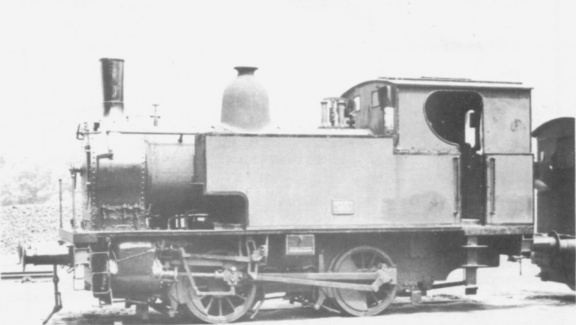
V.C.S. Sugar Factory Built by Breda in 1901 (works number 170) this chunky standard gauge side tank was formerly State Railways No.657. Since being photographed on 3rd June 1967 it has moved to Enschede for preservation. (R.J. Brettschneider)
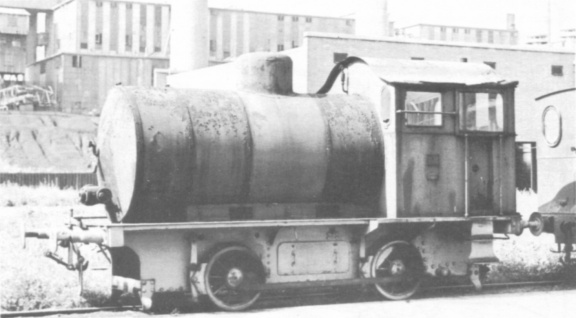
Keilehaven Gas Works, Rotterdam No.2, an inside cylinder fireless (Hohenzollern 3067 of 1913) was one of six standard gauge locos at this location. Photographed in May 1968. (R.J. Brettschneider)
Last but not least of the surviving narrow gauge steam are the three 700mm 0−4−0 well tanks with tramway type skirting at the Keilehaven Gas Works in Rotterdam; numbered 1, 3 and 6, they were built by Orenstein & Koppel in 1912 (5371), 1913 (6277) and 1921 (9672). Though replaced by diesels some considerable time ago, they lingered on and at the time of writing stand in a siding alongside one of the cokeovens. As production here has been suspended due to a change from coal to natural gas, and partial demolition has been started, these locos can't be expected to last much longer. The foregoing trio was by no means alone at this location, however, as there used to be six standard gauge engines too, one being a big inside cylindered 0−4−0 fireless (Hohenzollern 3067 of 1913). As it took quite a time to charge her with steam, rather a nuisance for everyday use, she stood idle most of the time; in fact we never saw her in steam, let alone doing any work. She was retained as a spare to 29 and 31, built by Jung & Staimer in 1886 (works numbers 11 and 12) which are by far the oldest working steamers in Holland and probably the oldest Jung engines still in existence. A similar engine, an 0−4−0 well tank like the others, came from Jung in 1908 (works number 1268). Only 29 remains, 30 and 31 having gone to the Tramweg Stichting (Tramway Foundation) at Hoorn for preservation in working order. Du Croo & Brauns of Weesp, near Amsterdam, built the last two standard gauge engines for the Gas Works in 1925 and 1926 (works numbers 65 and 66). These took running numbers 8 and 12 and were skirted like the narrow gauge engines; they had a low overall height also. In 1968 they disappeared and we have not yet been able to trace their present whereabouts.
Heading south from Rotterdam and crossing the Moerdijk bridge one enters sugarbeet country and at Zevenbergen sugar factory are two 0−4−0 well tanks for working traffic to and from the railway station. Orenstein & Koppel 8319 of 1918 came from the Westlandse Stoomtram in 1940 where she bore the number 23, whilst Henschel 18267 of 1921 possibly came from Kon Ned. Gist & Spiritus at Bergen op Zoom.
A little further on, not far from the Belgian frontier, lies Roosendaal where, on the far side of the railway yard, is situated the Verenigde Suikerfabriek, owners of a small but interesting stock of engines. No.1 (Henschel 18776 of 1921) was an 0−4−0 tram loco originally belonging to the Gooische Stoomtram. It was in use as a stationary boiler latterly and in 1967 was donated to the Tramweg Stichting which named her LEEGHWATER. The oldest engine here was No.3, built by Maschinefabriek Breda (170 of 1901) as State Railways No. 657, later becoming Nederlandsche Spoorwegen 8107. An 0−4−0 side tank, she was originally designed for shunting but later was also used to work local trains. During the last few years she lay out of use on a siding with a cracked firebox, but in 1968 she went to a group of enthusiasts at Enschede. The third engine which may well be No.2 (though she carried no number when we saw her) is a former War Department 0−6−0 saddle tank built by Hunslet in 1944; the works number is probably 3123 but we couldn't make this out very well. Her bunker has been enlarged which doesn't exactly enhance her appearance, and her driver told us she suffered from loose tyres.
There is one other sugar engine and this is at the Centrale Suiker Maatschappij factory at Breda. She is an 0−4−0 well tank built by Orenstein & Koppel in 1921 (9511) and came here in 1950 as a replacement for an older Borsig engine. The factory is on the opposite side of the Mark river to the railway station; the works siding branches off just opposite the old Grand Central Belge station building, now converted into staff dwellings.
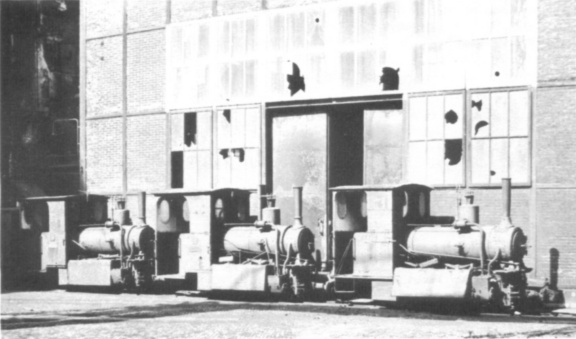
Keilehaven Gas Works, Rotterdam 700mm gauge Orenstein & Koppel locos 6, 3 and 1 had been out of use for some years when this photograph was taken in May 1968. (R.J. Brettschneider)
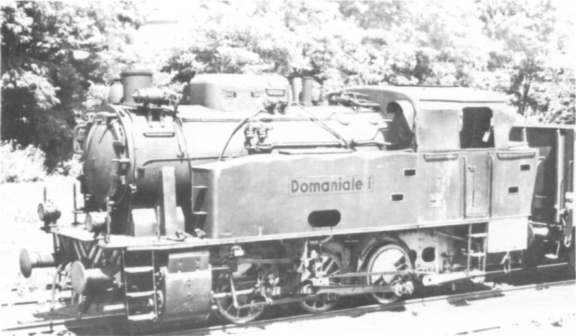
Domaniale Mine, Kerkrade Krupp 3436 of 1961, the last steam loco built for use in Holland, works the standard gauge private branch to Spekholzerheide where it was photographed on 18th July 1967. (R.J. Brettschneider)
The private coal mines in the south still have an interesting variety of engines by Belgian, American, British and German builders. The oldest mine of all is the Domaniale at Kerkrade which dates back to the beginning of the 19th Century. There is only one steam loco at the mine now, a large 0−6−0 side tank, but her distinction lies in being the very last steam engine built for Holland. New from Krupp in 1961, her works number is 3436, and she can be seen working the Domaniale's private line which runs all the way from the colliery to Spekholzerheide railway station.
About two miles north of Kerkrade lies Haanrade railway station from where the Laura and Julia colliery sidings branch off. Steam still reigns supreme at this location with twelve locos still active, as under:
| LV 6 | 0-4-0T | OC | Franco-Belge | 2336 | 1923 | |
| LV 7 | 0-4-0T | OC | Hohenzollern | 4453 | 1928 | |
| LV 8 | 0-6-0T | OC | Hanomag | 10746 | 1930 | |
| LV 9 | 0-6-0WT | OC | Krupp | 745 | 1924 | ex Krupp, /1931 |
| LV11 | 0-6-0WT | OC | Krupp | 737 | 1924 | |
| LV 12 | 0-6-0ST | IC | Hunslet | 2873 | 1943 | ex WD 75024 |
| LV 13 | 0-6-0ST | IC | Hudswell C. | 1737 | 1943 | ex NS, 8811; orig. WD 75080 |
| LV 14 | 0-6-0ST | IC | Hunslet | 3165 | 1944 | ex NS 8826; orig. WD 75115 |
| LV 15 | 0-6-0ST | IC | Hudswell C. | 1739 | 1943 | ex NS 8812; orig. WD 75082 |
| LV 16 | 0-6-0ST | IC | Hunslet | 3155 | 1944 | ex NS 8815; orig. WD 75105 |
| LV 17 | 0-6-0ST | IC | R. Step. & H. | 7087 | 1943 | ex NS 8807; orig. WD 75051 |
In the above list LV stands for Laura & Vereeniging, the owning company's title. LV 8 was one of the last locos built by Hanomag, their final one being 10764 turned out on 29th June 1931 for the North Western Railway of India. LV 11 was delivered new in 1932 to the Limburgsce Tramweg Maatschappij but when the coal traffic from Echt railway station to Maasbracht Harbour ceased, she was sold to the Julia Colliery in 1937; her LTM number was 53. LV 12 was the only one of the six WD "Austerities" not to be taken over from the NS (Nederlandsche Spoorwegen), being obtained from WD surplus stock in 1945.
Adjoining Heerlen railway station are the shed and works of the Oranje-Nassau 1 colliery, one of four owned by a company of the same name.
The following were in stock at the end of 1966 :
| 14 | 0-6-0T | OC | La Meuse | 3052 | 1924 | New |
| 16 | 0-6-0T | OC | La Meuse | 3292 | 1928 | New |
| 19 | 0-6-0T | OC | Hohenzollern | 4368 | 1923 | ex State Mines, /1961 |
| 20 | 0-6-0T | OC | Borsig | 12005 | 1928 | ex Borsig (new), /1932 |
| 23 | 0-8-0T | OC | La Meuse | 3481 | 1933 | New |
| 26 | 0-6-0T | OC | Davenport | 2533 | 1943 | ex USATC 4389, /1947 |
| 27 | 0-6-0T | OC | Davenport | 2513 | 1943 | ex USATC 1948, /1947 |
| 29 | 0-4-0T | OC | La Meuse | 4110 | 1941 | ex Carisborg brown coal quarry, /1950 |
The boilers of the former United States Army Transportation Corps engines (26 and 27) were Murrey Iron Company numbers 5098 and 5073.
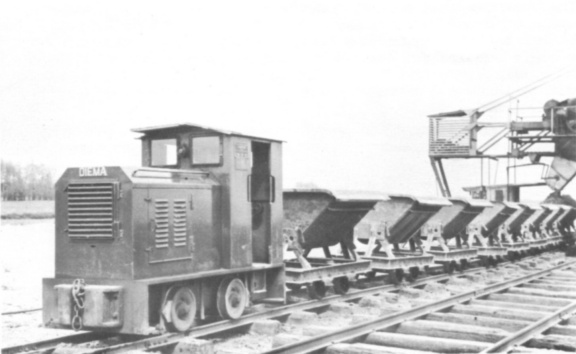
Lunenburgerwaard Brickworks 700mm gauge Diema diesel 1913 of 1956 is a less handsome successor to the Henschel well tank it replaced. Photographed on 9th May 1967. (R.J. Brettschneider)
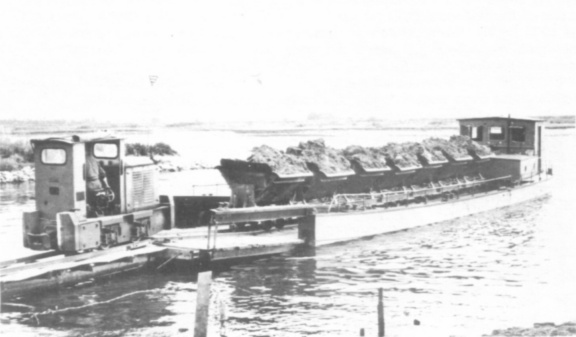
"De Steenwaard" Brickworks, near Wageningen Diesel or no, this 700mm gauge "train ferry" makes a charming and unusual scene. Orenstein & Koppel 25652 of 1955 heads for the brickworks whilst the barge returns to the clay pits. (R.J. Brettschneider)
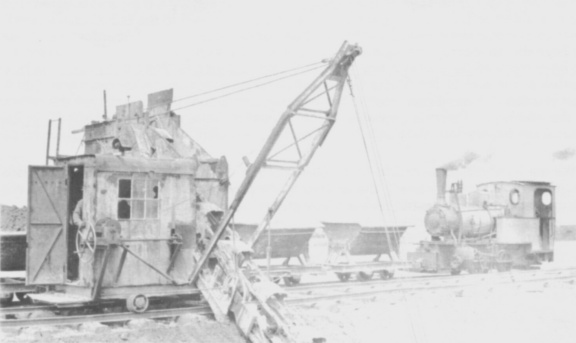
Lunenburgerwaard Brickworks Henschel 21147 of 1928 on 700mm gauge was the working loco on 9th May 1964, but has since become spare to a Diema diesel. (R.J. Brettschneider)
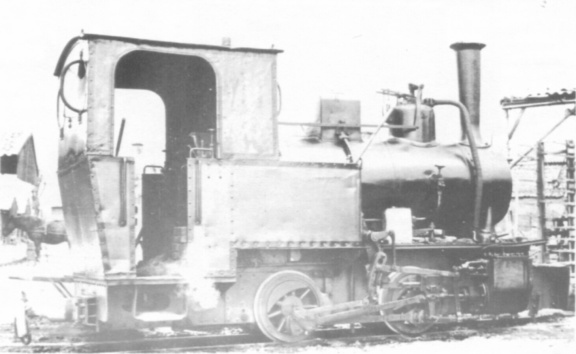
AriŽns I Brickworks, Maurik Still in use on 9th May 1967 was 700mm gauge Henschel 21765 of 1930. Notice the horse in the left background used on internal transport. (R.J. Brettschneider)
Holland, too, had its share of the once ubiquitous Cockerill 0−4−0 vertical boilered shunters, and one is still at the Carisborg briquette factory (as opposed to the brown coal quarry). Her driver told us that she is one of the former Sfinx Cťramique engines, but unfortunately we have not been able to identify the loco as the motion numbers were not clear and the original boiler has been replaced by a similar one from E. Duray, Ecaussines (3441 of 1913). The factory is situated at the rear of the Emma Colliery; a street running past the entrance branches off the main Heerlen - Hoensbroek road at Hoensbroek, just before this road crosses the railway line to the colliery. There is probably another vertical boilered 0−4−0 at Sluiskil, in Zeeuws-Vlaanderen (nearly into Belgium), but as we have not seen this engine we can give no particulars.
We are indebted to an article by Ir. Overbosch in the July 1967 issue of "Op de Rails" for a number of details concerning the engines at the private mines, and also to John K. Williams of Stoke-on-Trent who visited several of the places mentioned in April 1968.

Tramweg Stichting Henschel steam tram 18776 of 1921, obtained from the V.C.S. sugar factory at Roosendaal in 1967, was photographed on 20th December 1967 at the Spoorijzer Works in Delft after being newly named LEEGHWATER. (R.J. Brettschneider)